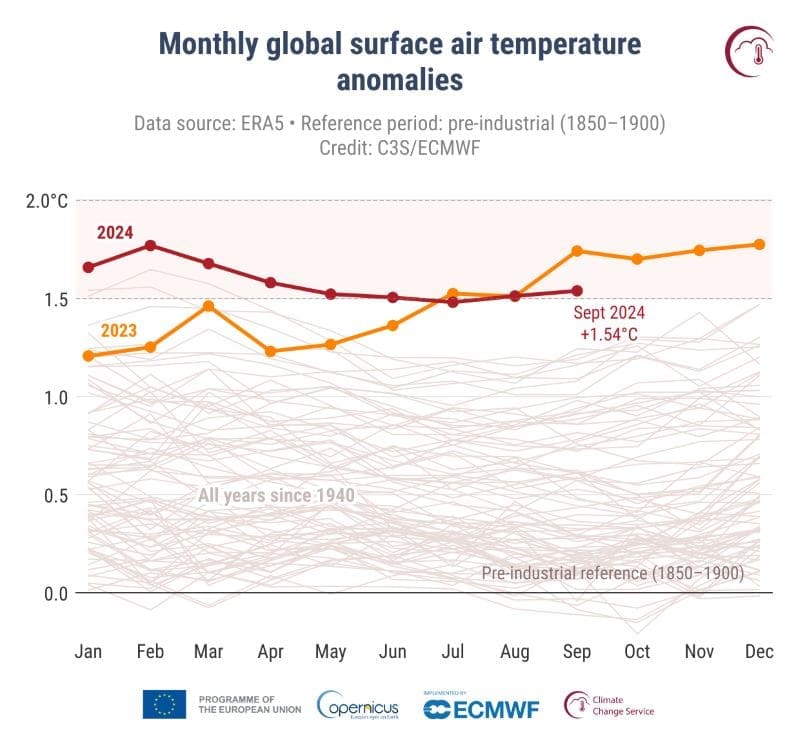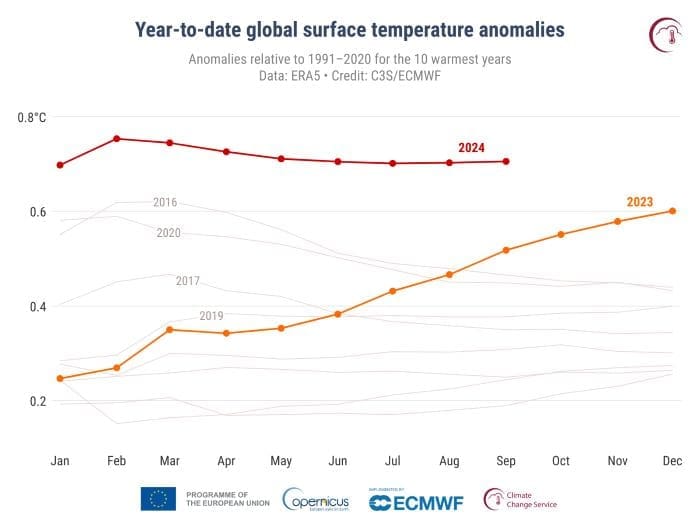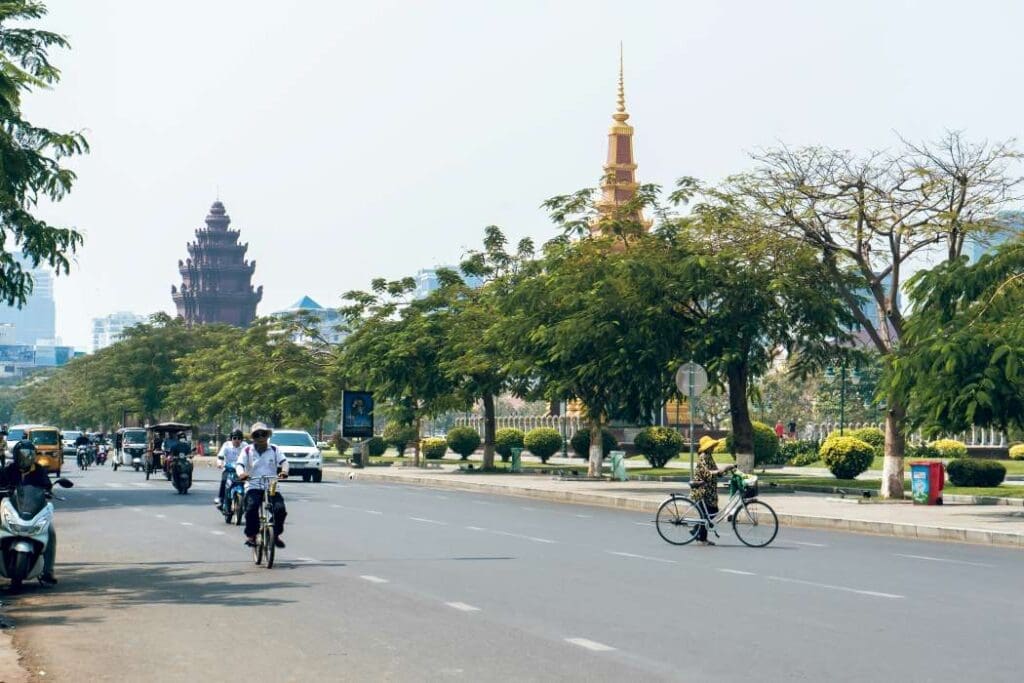In a stark reminder of the ongoing impacts of climate change, September 2024 has been confirmed as the second warmest September on record, both globally and across Europe, according to the latest data from the Copernicus Climate Change Service (C3S).

The global average surface air temperature for the month was 16.17°C, marking a significant 0.73°C increase over the 1991-2020 average and sitting just behind September 2023. With temperatures 1.54°C above pre-industrial levels, this month became the 14th out of the last 15 months where global temperatures have remained more than 1.5°C above pre-industrial levels.
Warming trend continues to break records
The year-to-date (January–September 2024) average global temperature anomaly reached 0.71°C above the 1991-2020 baseline, the highest recorded for this period. This represents an increase of 0.19°C compared to the same time frame in 2023, reinforcing the trend that 2024 is poised to be the hottest year on record if this pattern continues. In fact, to avoid setting a new record, global temperatures would need to fall by an unprecedented 0.4°C in the remaining months of 2024.
The warming trend extended beyond land to the world’s oceans. September 2024 recorded the second-highest average sea surface temperature for the month, with temperatures reaching 20.83°C, a slight 0.09°C decrease from September 2023.
While developing La Niña conditions brought cooler waters to the central and equatorial Pacific, sea surface temperatures remained unseasonably high in many regions.
Europe’s extreme weather events and temperature anomalies
Europe has also been impacted, with September 2024 ranking as the second warmest September in recorded history for the continent. The average European temperature for the month was 1.74°C above the 1991-2020 norm, trailing only behind September 2023, which held an even larger anomaly of 2.51°C.
This year, the highest temperature deviations occurred in eastern and northeastern Europe, while a few areas, including parts of western Europe, recorded below-average temperatures. September also brought a series of extreme precipitation events across Europe, with Storm Boris leading to flooding and widespread damage in Central and Eastern European regions. These intense rainfalls, which deposited months’ worth of rain in just a few days, were driven by warmer atmospheric conditions, a pattern expected to become more common with the ongoing warming trend.

“September 2024 was the second warmest both globally and for Europe,” stated Samantha Burgess, Deputy Director of C3S. “The extreme rainfall events of this month, something we are observing more and more often, have been made worse by a warmer atmosphere, leading to more intense rainfall. The risk of extreme rainfall will continue to increase with rising temperatures; the sooner we reach NetZero emissions, the sooner we can mitigate this risk.”
Global patterns of hydrological extremes
The warmth of September 2024 was accompanied by hydrological extremes worldwide. Europe experienced above-average precipitation in many regions, yet areas such as Ireland, northern UK, and the western and southern Iberian Peninsula recorded drier-than-average conditions, exacerbating wildfire risks.
Across North America, September was wetter than average in the southeastern U.S., partly due to Hurricane Helene, which led to significant flooding. Other regions experiencing increased rainfall included northern Africa, northeastern Russia, eastern China, and the southernmost areas of Brazil and Australia. Typhoon Krathon severely impacted Taiwan and the Philippines, while Pakistan faced extreme monsoon conditions.
Conversely, dry conditions persisted in parts of North America, northeastern China, and southern Africa, with droughts fostering wildfire activity in multiple areas, including Russia and South America.

The record-breaking temperatures and extreme weather of September 2024 underscore the urgency of addressing climate change to mitigate risks associated with rising temperatures. The data from Copernicus is a stark reminder of the global temperature trend and its impacts. The recurring heatwaves, storms, and wildfires seen across the planet represent the increasingly volatile climate that we may face if significant steps towards NetZero emissions are not achieved soon.
As we look forward to the remainder of 2024, it is almost certain that this year will mark the warmest on record, potentially setting a new benchmark in global temperatures. If the predictions hold, 2024 will go down in history not only for its heat but for the stark warning it delivers regarding our rapidly changing climate.
Article Source:
Press Release/Material by Copernicus Climate Change Service
Featured image credit: vwalakte | Freepik




